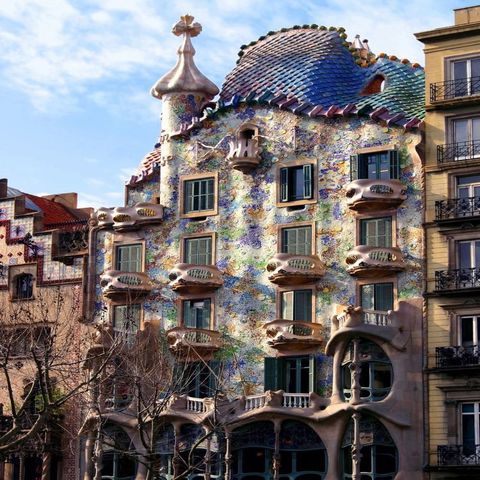
Mosaics in Architecture: Floors, Walls, Murals, and Public Spaces
Introduction
Walk into a Roman villa, a Byzantine church, or a modern subway station, and chances are mosaics will be under your feet, above your head, or glimmering on the walls. Mosaics are one of the few art forms that are both decorative and structural, blending seamlessly into architecture. They protect surfaces, tell stories, and transform ordinary spaces into extraordinary ones.
This chapter of The Complete Guide to Mosaics explores how mosaics have shaped architecture across history, how they’re used in everyday life today, and why they remain one of the most versatile and enduring forms of built-in art.
---
1. Roman Floors — Practical and Beautiful
Romans were masters of functional mosaics.
Floors in Villas: Durable surfaces with mythological or domestic scenes.
Bathhouses: Slip-resistant floors with marine motifs.
Public Buildings: Decorative pavements, geometric designs for large crowds.
Example: The mosaics of Pompeii and Herculaneum, where floors survived volcanic ash, proving their durability.
---
2. Byzantine Walls and Domes
The Byzantines shifted mosaics from floor to wall and ceiling, creating spaces that glowed with gold and color.
Church Domes: Christ Pantocrator gazing down from above.
Walls: Religious storytelling through iconography.
Light Effects: Smalti set at angles to shimmer in candlelight.
Example: Hagia Sophia, Istanbul, where mosaics once dominated the interior.
---
3. Islamic Geometry and Ornamentation
In Islamic architecture, mosaics expressed spirituality without figurative imagery.
Mosques and Palaces: Intricate zellige and faience mosaics.
Courtyards and Fountains: Cooling, patterned spaces.
Philosophy: Infinite repeating patterns reflected divine infinity.
Example: The Alhambra, Spain—walls and fountains covered in dazzling tiles.
---
4. Medieval and Renaissance Cathedrals
Italy (Venice, Florence, Rome): Churches glittering with mosaics in apses and chapels.
Cosmatesque Floors: Geometric opus sectile pavements with marble inlay.
Renaissance: Mosaics used alongside frescoes and stained glass.
Example: St. Mark’s Basilica, Venice—walls, domes, and arches entirely clad in mosaics.
---
5. Modern Mosaics in Architecture
Gaudí and Modernism
Park Güell and Casa Batlló in Barcelona use trencadís mosaics to cover benches, walls, and façades.
Organic shapes merge architecture with color and texture.
20th Century Revivals
Public mosaics in metro stations (e.g., Moscow, Stockholm, New York).
Civic buildings decorated with mosaic murals in the U.S., Mexico, and South America.
Contemporary Architecture
Mosaics in luxury hotels, spas, and private homes.
Community art projects revitalizing urban walls.
Glass and ceramic mosaics in pools, kitchens, bathrooms.
---
6. Mosaics in Everyday Life
Mosaics aren’t only monumental—they’re domestic, too.
Garden Features: Birdbaths, stepping stones, benches.
Furniture: Tabletops, picture frames, mirrors.
Home Interiors: Kitchen splashbacks, bathroom walls, fireplace surrounds.
Public Spaces: Playground sculptures, park benches, murals.
These functional mosaics bring art into daily living, blurring the line between gallery and home.
---
7. Community and Public Murals
One of the most powerful modern uses of mosaics is in community art projects:
Murals: Schools, hospitals, parks often feature collaborative mosaics.
Healing Spaces: Mosaics used in memorials and therapeutic art.
Social Storytelling: Neighborhood history told through shared artworks.
Example: Philadelphia’s Magic Gardens (by Isaiah Zagar), a sprawling public art environment built with recycled materials.
---
8. Why Architects Love Mosaics
Mosaics are favored in architecture because they combine:
Durability: Withstand centuries of wear.
Flexibility: Fit any surface—flat, curved, indoor, outdoor.
Aesthetic Impact: Transform plain walls into dazzling artworks.
Symbolism: Convey cultural, religious, or political messages.
---
9. Modern Innovations in Architectural Mosaics
Digital Mosaics: Images translated into glass/ceramic tiles via software.
3D Surfaces: Sculptural mosaics on buildings and installations.
Eco-Mosaics: Sustainable materials like recycled glass or solar-integrated tiles.
Interactive Mosaics: Light or sound-reactive designs in public spaces.
---
10. Case Studies
Pompeii’s Floors: Functional art that survived millennia.
Hagia Sophia: Religious and political symbolism.
Alhambra: Mathematical beauty in tilework.
Park Güell: Whimsical, colorful integration with architecture.
New York Subway Murals: Everyday art for millions of commuters.
Philadelphia’s Magic Gardens: Grassroots, community-driven mosaic environment.
---
Conclusion
Mosaics are not just decoration—they’re architecture itself. From Roman bathhouses to Gaudí’s modernist benches, mosaics have served as flooring, walls, domes, furniture, fountains, and public murals. They elevate spaces from utilitarian to extraordinary, blending beauty with durability.
In everyday life, mosaics remind us that art doesn’t just hang on gallery walls—it surrounds us, under our feet and above our heads, turning ordinary moments into experiences of wonder.